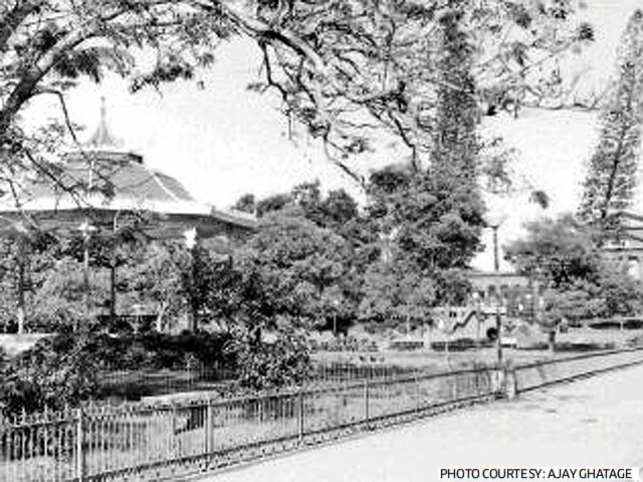Bandstand
England witnessed the brass band movement in the 1800s at the peak of the industrial revolution. Musical ensembles using a standardised range of brass and percussion instruments were in demand among the working classes. The latter appreciated cheap and good entertainment. By the late 1800s, as industries expanded and working-class numbers rose, brass bands became very sought-after in that country.
It did not take long to reach the colonies. Bengaluru’s bandstand came up in the 1870s. According to the Mysore Gazetteer (1897), there was a double-pillared, ground-level bandstand near the Bowring Institute. Then, around 1914, a proposal was mooted to demolish it and construct a bandstand inside the Cubbon Park. An ornamental, eight-pillared iron structure was imported from Walter Macfarlane & Co in Glasgow.
“Shipping such ornate structures from England was a way to show British strength and dominance in the colonies,” said Poornima Dasharathi of Unhurried.in, who conducts heritage walks in the Cubbon Park. “The bandstand hosted the best regimental bands and catered mostly to the soldiers and residents in the civil and military station here.”
Initially, the bandstand was located in a rose garden. Officially inaugurated in 1918, the Mysore Infantry Band performed there every Wednesday and Saturday, while the Madras Pioneer Group performed on the fourth Thursday of every month. The latter also put up a grand show there in 1927 to commemorate the silver jubilee of Nalwadi Krishnaraja Wadiyar’s rule. Even the Royal Air Force band played here.
Soon, the popularity of the bandstand increased and it became difficult to accommodate the crowds that turned up for the performances. At the suggestion of prince Jayachamarajendra Wadiyar, a music aficionado himself, it was shifted to its current location in front of the State Central Library. “According to old Anglo-Indian residents of the Cantonment, patriotic songs and Kannada music played at the bandstand post-Independence,” said Dasharathi. Performances were organised by the Bangalore Municipal Corporation every weekend. “This died down in the 60s because many other venues of entertainment started mushrooming.”
The bandstand soon dilapidated because of neglect. Two years ago, the horticulture department decided to restore the physical structure to its former glory. It also collaborated with the Bal Bhavan and the Department of Kannada and Culture to organise 6 am to 6 pm cultural events on Sundays. Mahantesh Murgod, deputy director of horticulture (Cubbon Park), said: “We have made arrangements to accommodate 100 people. So far, our slots are running full. Music and dance engage beautifully with visitors in the park.”
source: http://www.economictimes.indiatimes.com / The Economic Times / Home> Magazines> Panache> City Life / by Divya Shekhar, ET Bureau / June 28th, 2018
